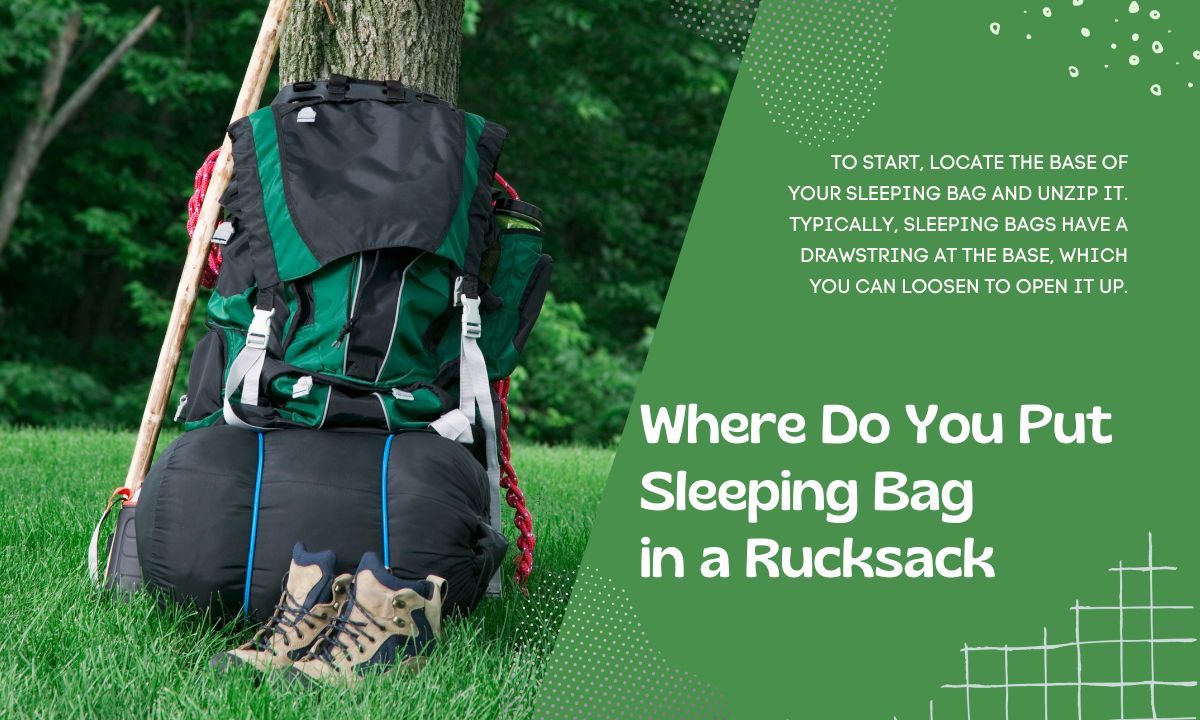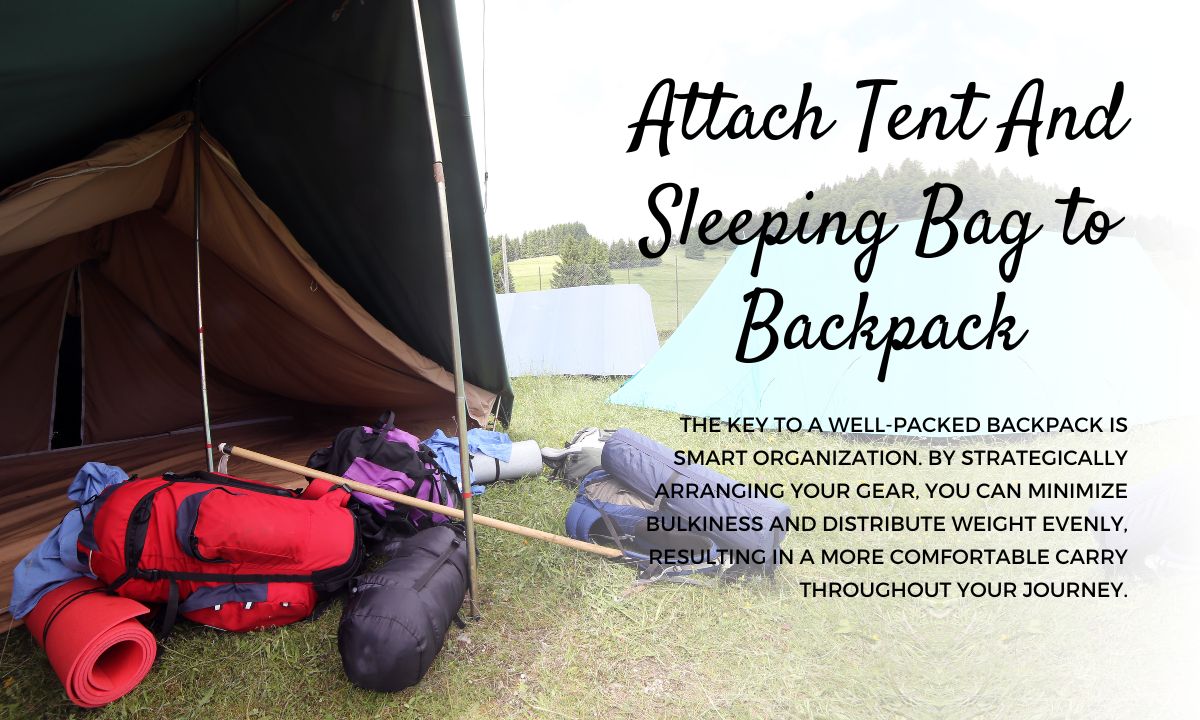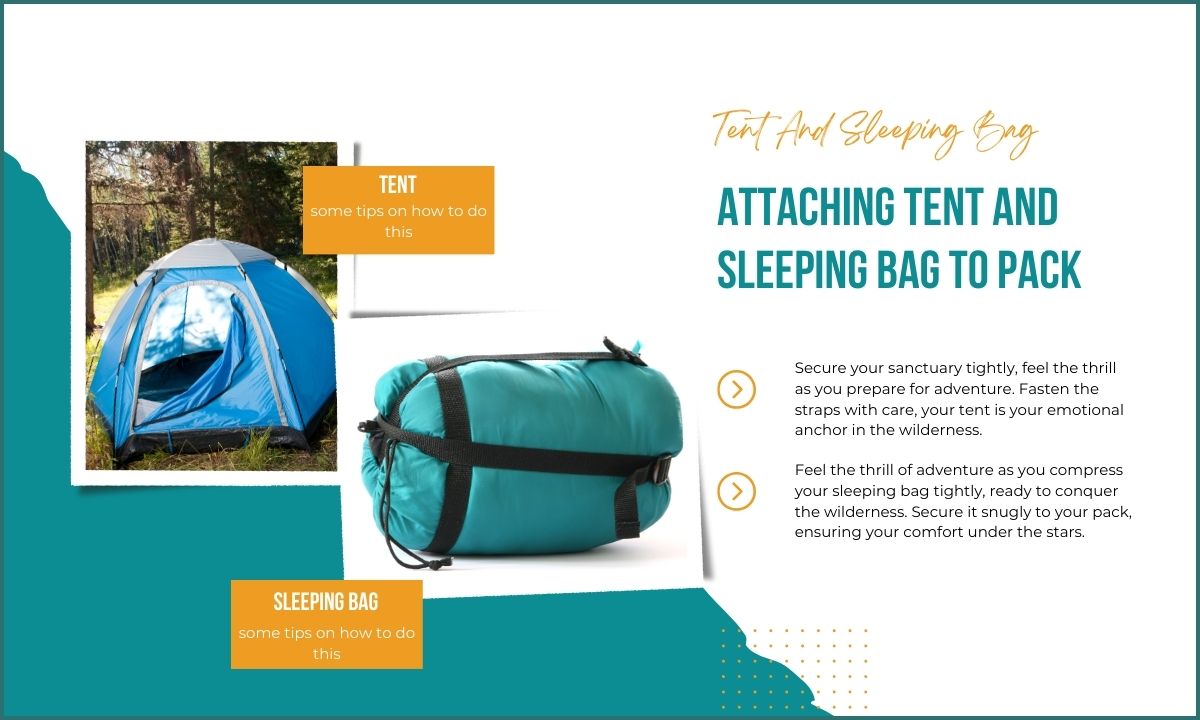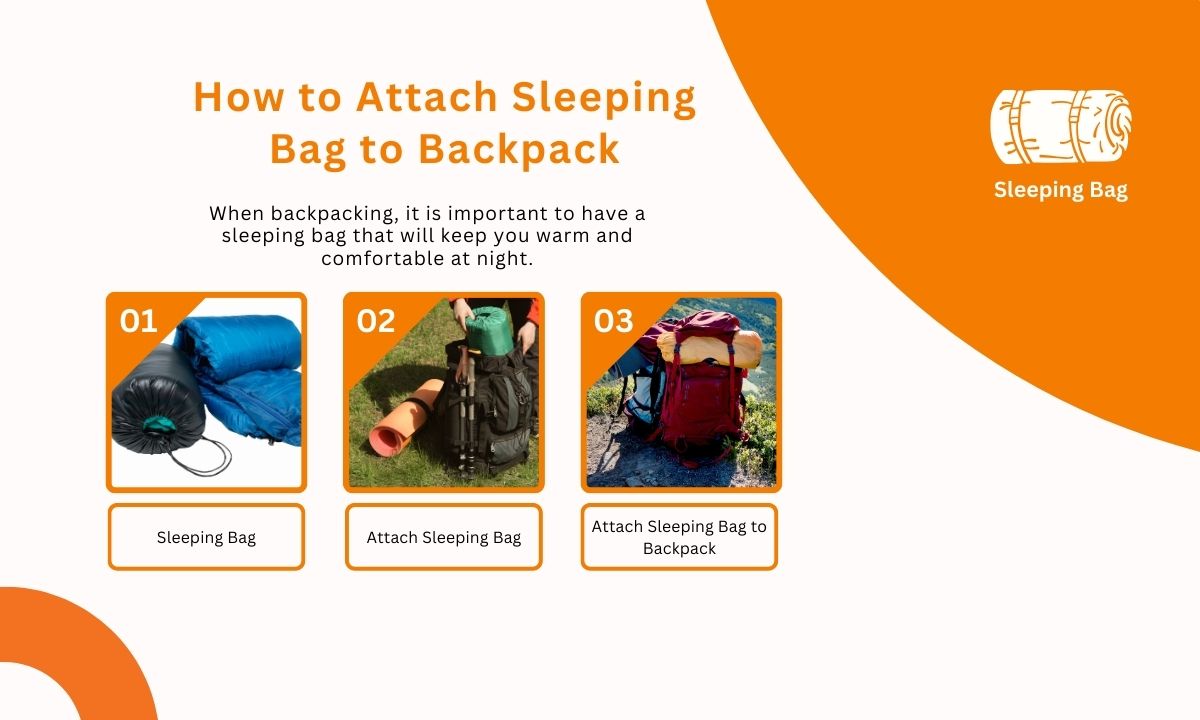When backpacking, it is important to have a sleeping bag that will keep you warm and comfortable at night. However, it can be difficult to carry a sleeping bag on your back, especially if you are hiking for long distances. There are a few different ways that you can attach your sleeping bag to your backpack, depending on the type of backpack you have.
If you have an external frame backpack, you can tie or clip the sleeping bag onto the frame. If you have an internal frame backpack, you can stuff the sleeping bag into the bottom of the pack or into one of the side compartments. You can also purchase special compression sacks which will help compress and secure the sleeping bag inside the backpack.
How to attach a sleeping bag to a backpack
How Do You Put a Sleeping Bag in a Backpack?
Assuming you have a backpack and a sleeping bag, there are a few ways to go about packing them together. If your sleeping bag is particularly bulky or difficult to compress, it may be easiest to put it in first and then fill the rest of the backpack around it. This will help keep the bag from taking up too much space and becoming misshapen.
Another option is to roll up your sleeping bag tightly and place it horizontally across the bottom of the backpack, underneath any other gear. Once again, this will help keep its shape while also freeing up space inside the pack. Whichever method you choose, make sure that your sleeping bag is securely fastened inside the backpack so that it doesn’t move around too much or become dislodged during transport.
You don’t want it sliding out at an inopportune moment!
Where Do You Put a Sleeping Bag in a Rucksack?

Assuming you are referring to a standard rectangle sleeping bag: The first thing you want to do is find the bottom of your sleeping bag and open it up. At the bottom of most sleeping bags, there is a drawstring that you can pull to open up the bottom of the bag.
Once the bag is open, lay it out flat so that you can see all of the different compartments. Most rucksacks have one large compartment where you can put all of your gear. The problem with putting your sleeping bag in this compartment is that it will take up a lot of space and make it difficult to find other things in your rucksack.
A better option is to put your sleeping bag in one of the side compartments. This way, it will be easier to access and won’t take up as much space in your rucksack. If your rucksack doesn’t have any side compartments, or if they are full, another option is to put your sleeping bag on top of everything else in your rucksack.
This isn’t ideal, but it will work in a pinch. Just make sure that you don’t put anything too heavy on top of your sleeping bag, as this could damage it.
How Do You Attach Things to the Outside of a Backpack?
There are a few different ways that you can attach things to the outside of your backpack. The most common way is to use loops or daisy chains. Loops are sewn into the fabric of your backpack, and daisy chains are rows of loops that are often made from webbing or cord.
You can also use carabiners, which are metal clips that open and close. To attach something to your backpack using a loop or daisy chain, simply thread the object through the opening and then clip it closed. Carabiners can be used in a similar way, but they’re also handy for attaching larger objects such as tents or sleeping bags.
Finally, some backpacks come with built-in straps or lash points that you can use to tie down larger items.
How Do You Connect a Sleeping Bag?

Assuming you would like tips on how to connect two sleeping bags: There are a few different ways that you can connect two sleeping bags, depending on the type of bag and what you are trying to achieve. If you have two rectangular sleeping bags, the easiest way to connect them is simply to zip them together.
This will create a larger surface area for sleeping, and will also keep you warmer since there will be less air between the two layers of fabric. If you have two mummy-style sleeping bags, it can be a bit more tricky to zip them together since the shape is more fitted. One method is to open up both bags and lay them flat, then zip them together along the edges.
Another option is to put one bag inside the other and then cinch them shut at the top. This second method might be better if you want each person to have their own hood and face opening. Whichever method you choose, make sure that both zippers are fully closed so that there are no gaps for cold air to come in. You may also want to consider using a Sleeping Bag Liner for extra warmth and insulation.
How to Attach Sleeping Bag to Osprey Backpack
In order to attach your sleeping bag to your Osprey backpack, you will need to first locate the daisy chains on the outside of the pack. These are typically located near the bottom of the pack, and are made up of a series of loops that allow you to thread webbing or cord through them. Once you have located the daisy chains, take one end of your sleeping bag’s stuff sack and thread it through the loops, starting at the bottom and working your way up.
When you reach the top loop, cinch down on the stuff sack so that it is secure, then repeat this process with the other end of the sleeping bag. That’s all there is to it! With your sleeping bag now attached to your pack, you can rest assured knowing that it isn’t going anywhere – no matter how rough the terrain gets.
Sleeping Bag Molle Attachment
One of the great things about sleeping bags is their portability. This means that you can take them with you wherever you go, whether you’re car camping, backpacking, or even just spending a night in the backyard. But what if there was a way to make your sleeping bag even more portable?
The Sleeping Bag Molle Attachment is a device that allows you to attach your sleeping bag to your backpack. This means that you don’t have to carry it separately, and it also frees up space in your backpack for other items. The Sleeping Bag Molle Attachment is made from durable materials and features a simple design.
It attaches to your backpack using two straps that go over the top of the bag and clip together. The attachment point is at the bottom of the sleeping bag, so it doesn’t add any extra weight or bulk to your pack. If you’re looking for a way to make your sleeping bag more portable, then check out the Sleeping Bag Molle Attachment.
It’s a simple and effective way to save space and make carrying your sleeping bag easier than ever before.
How to Attach Tent And Sleeping Bag to Backpack
One of the most important things to consider when packing for a camping trip is how you will carry all of your gear. Backpacks are essential for carrying everything you need, but if you’re not careful, they can quickly become overloaded and uncomfortable to carry. One way to lighten your load is to attach your tent and sleeping bag directly to your backpack.
This will save space and make it easier to find everything when you need it. Here’s how to do it:

Sleeping Bag Too Big for Backpack
One of the most important things to consider when packing for a backpacking trip is the size of your sleeping bag. You want to make sure that your sleeping bag will fit comfortably in your backpack, without taking up too much space. Unfortunately, many people make the mistake of choosing a sleeping bag that is too big for their backpack.
This can lead to a number of problems, including: Your sleeping bag may not fit snugly in your backpack, leaving room for it to shift around and become tangled. This can make it difficult to carry, and can also cause damage to the bag itself.
Additionally, if your sleeping bag is too big for your backpack, it may not provide enough insulation against the cold ground at night. A large sleeping bag can also add unnecessary weight to your pack. Every pound counts when you’re carrying everything on your back, so you want to avoid unnecessarily heavy items like a bulky sleeping bag.
If you must bring a large sleeping bag, consider using it as part of your tent’s flooring or stuffing it into an empty space in your pack so that it doesn’t weigh down one side more than the other. Finally, remember that you can always rent or purchase a smaller sleeping bag once you arrive at your destination if necessary. Many hostels and camping grounds have these available for guests who didn’t bring their own gear.
So if you find yourself with a too-big sleeping bag, don’t despair – there are still options available to help you get a good night’s sleep on your next backpacking adventure!
How to Attach Sleeping Mat to Rucksack Army
Most sleeping mats come with some kind of attachment system that allows them to be easily attached to a rucksack. The most common type of attachment system is a set of loops or straps that go around the mat and clip onto the back of the pack. Some models also have an integrated stuff sack that doubles as an attachment point.
If your mat doesn’t have an attachment system, you can improvise one by threading a length of cord through the mat’s carrying handle and tying it to the back of your pack. Another option is to tie the mat directly to the outside of your pack using webbing or rope. Whichever method you choose, make sure the mat is securely fastened so it doesn’t come loose and get lost while you’re on the move.
Attaching Tent And Sleeping Bag to Pack
When backpacking, it is important to know how to properly attach your tent and sleeping bag to your pack. This will ensure that your belongings stay dry and secure while you are on the trail. Here are some tips on how to do this:

Tent:
Sleeping Bag:
How to Attach Things to Backpack
Attachments for backpacks come in a wide variety of shapes and sizes. The most common backpack attachment is the carabiner, which is a small metal loop with a spring-loaded gate. Carabiners can be used to attach almost anything to your backpack, including water bottles, keychains, and even other bags.
If you’re looking for something more permanent, consider using zip ties or Velcro strips.
How to Use Sleeping Bag Straps

Assuming you would like a blog post discussing how to use sleeping bag straps: Most sleeping bags come with straps – usually two – located at the bottom. These are designed to help cinch down your bag so that it doesn’t take up as much space in your pack, and also helps keep it from getting tangled up.
Here’s how to use them: First, thread one strap through the other to create a loop. Next, open up your sleeping bag and lay it flat.
Place the loop around the center of the bag, then cinch it down tight and secure it with a knot or clip. Finally, repeat on the other side. That’s all there is to it!
Using sleeping bag straps is a quick and easy way to save space in your pack and keep your gear organized. Give it a try next time you hit the trail.
Conclusion
In order to attach a sleeping bag to your backpack, you will need to purchase a sleeping bag compression sack. These sacks are specifically designed to compress the sleeping bag into a smaller size, making it easier to transport. Once you have your sack, simply follow these steps:




